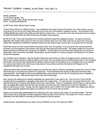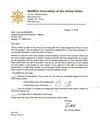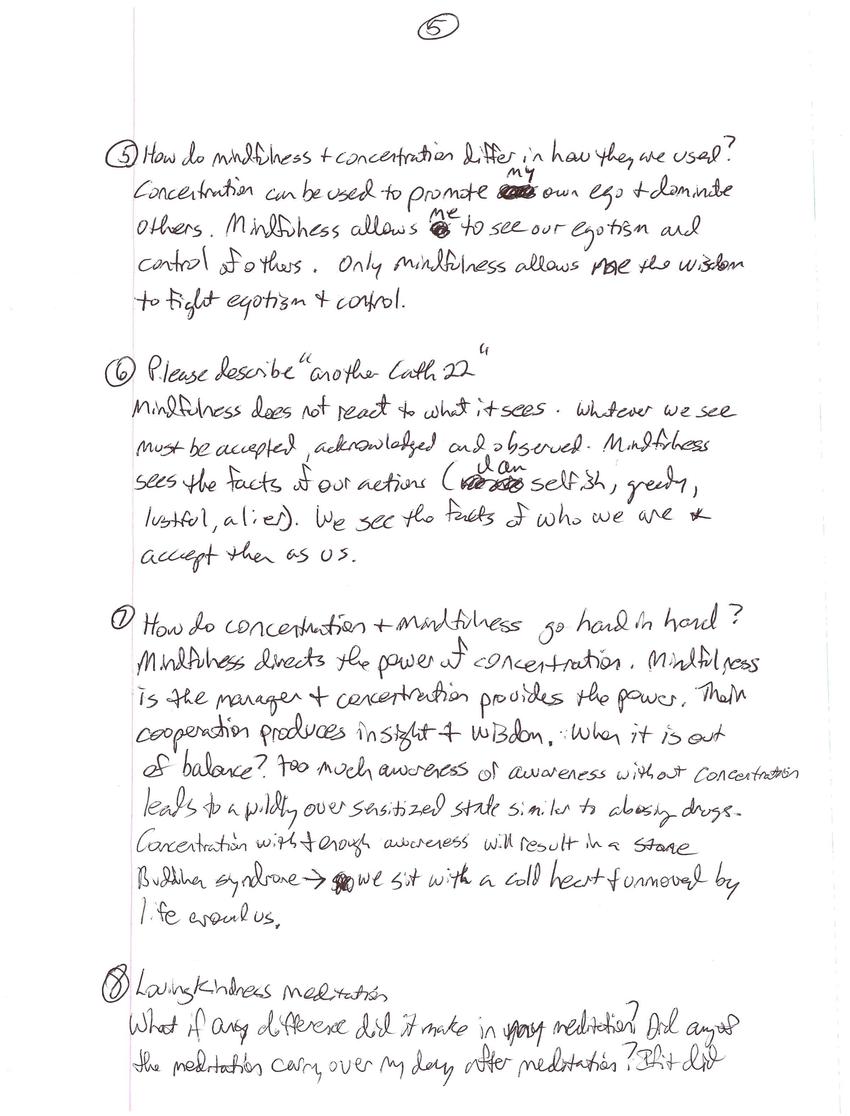Transcription
3-20-16
Mindfulness in Plain English
#7 assignment
Student ID #4057
Allan Lummus #23038076
Chapter 13 Sati
1. Describe in your own words what mindfulness is, how it operates, and what it accomplishes.
Mindfulness is the sense of awareness of what is happening now. It is the experience of being aware of this moment without all the language we use to describe and represent that experience. Mindfulness helps me see what is going on now, here. Also helps me act in the most productive/useful way for this particular situation.
2. What is the purpose of Vipassana?
Vipassana is insightful meditation, skills designed to help me experience mindfulness.
3. Briefly list and describe the characteristics of mindfulness.
-Mirror thought: reflecting what is happening and no more. Just like a mirror.
-Non-judgmental: observes without bias or criticism.
-Impartial watchfulness: another way of saying non-judgmental but with some attentiveness to what is going on.
-Non-conceptual awareness: bear attention without concepts or language to shape that attention.
-Present awareness: takes place here + now.
-Non-egotistic alertness: attention without reference to self me, mine, I.
-Goalless awareness: being focused on not doing or accomplishing. Just being.
-Awareness of change: observing the moment to moment change of all phenomenon.
-Participatory observation: the mediator has to both experience the moment and observe themselves experiencing the moment.
4. What are the three fundamental activities of mindfulness?
One. Mindfulness reminds me of what I am supposed to be doing.
Two. Mindfulness sees things as they are.
Three. Mindfulness sees the deep nature of phenomenon.
5. Day of mindfulness: What was my experience of that day? How long was I able to maintain my mindfulness? What caused me to lose mindfulness? How long did I lose mindfulness? How did I get it back? How did it change how I experienced events during that day?
I am still only able to maintain concentration for short periods of time + only when I was alone and not interacting with others. When someone talks to me, my attention is split between them + how I am interacting with them. When working alone at work, I was able to stay focused longer. When I was alone, the things that distracted me were thoughts about people or plans for the future (short or long term).
I would be gone for minutes at a time before I would return sometimes. When I was alone, it was shorter than with others. With others, I would only return to mindfulness after the other person walked away. My mindfulness would bring my attention to the fact I had strayed, whether with a thought of someone or a plan or with an interaction with someone. As they leave, I would become aware of my distraction because of mindfulness noticing.
My experience of events has changed over time. When I first stated trying to bring mindfulness into my day, I would get easily frustrated with how quick my mind left. Now I expect it to leave at some point, so when it does, it is much easier to bring it back. My concentration is not great, but I am not beating myself up about it now.
Chapter 14 Mindfulness + Concentration
1. What is the difference between mindfulness + concentration?
Concentration is one-pointedness of mind. Forcing the mind to stay on one object by sheer willpower. Mindfulness notices things, both the object and when the attention moves from the object. Concentration then holds the attention to keep it on the object.
2. How do they reinforce one another?
Mindfulness notices and chooses an object to observe the concentrations holds the attention to the object. Mindfulness notices when the attention strays and brings back to the object. The concentration provides the power/energy to keep the attention focused on the one point→object.
3. What is the difference between true concentration and unwholesome concentration?
True concentration is free of defilements: greed, hatred, delusion. Unwholesome concentration is characterized by its focus on those unhealthy characteristics. Concentration is a tool. We can use it for good or ill. True concentration is when we use it for good for ourselves and others while unwholesome is when we use the tool of concentration for unhealthy ends for ourselves or others.
4. Are mindfulness and concentration developed in the same way?
Concentration can only be developed in very special settings that provide little distraction. The monastery or retreat we such settings. Conversely, mindfulness can be developed anywhere and anytime. The ability to notice and be aware of needs no particular setting to practice in.
5. How do mindfulness + concentration differ in how they are used?
Concentration can be used to promote my own ego + dominate others. Mindfulness allows me to see our egotism and control of others. Only mindfulness allows me the wisdom to fight egotism + control.
6. Please describe "another Catch 22."
Mindfulnes does not react to what it sees. Whatever we see must be accepted, acknowledged, and observed. Mindfulness sees the facts of our actions (I am selfish, greedy, lustful, a liar). We see the facts of who we are + accept them as us.
7. How do concentration + mindfulness go hand-in-hand?
Mindfulness directs the power of concentration. Mindfulness is the manager + concentration provides the power. Their cooperation produces insight + wisdom. When it is out of balance? Too much awareness or awareness without concentration leads to a wildly over-sensitized state similar to abusing drugs. Buddha syndrome → we sit with a cold heart + unmoved by life around us.
8. Loving, kindness, meditation: What if any difference did it make in meditation? Did any of the meditation carry over my day after meditation? If it did, describe how it did. If not, why not?
The affirmations from the meditation provides a relaxing response in me. I settle into a more relaxed + calm posture as I repeat the word. Sometimes the words carried over + sometimes now. Some days I was more conscious of the intention during moments later in the day. For example, I was feeling irritated by a CO who was being course and harsh with other inmates. I noticed and remembered my earlier affirmations and thought then for him in my head.
On other days, I could not remember a conscious connection between the meditation + activities during the day. But even this I could not rule out the idea that I was reacting unconsciously to the meditation affirmation during the day.
Other posts by this author
|
2017 sep 12

|
2017 may 31

|
2017 feb 23

|
2017 jan 15

|
2016 dec 11

|
2016 nov 26

|
More... |








Replies